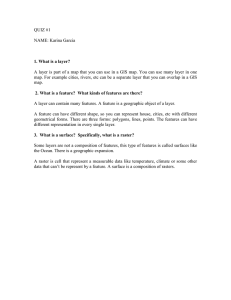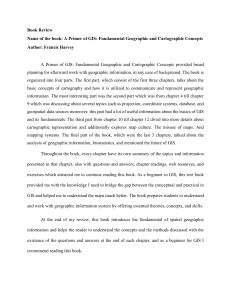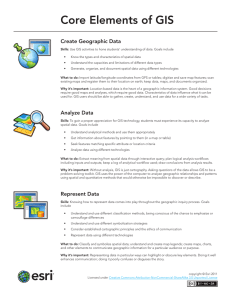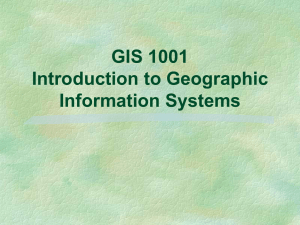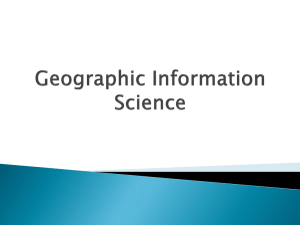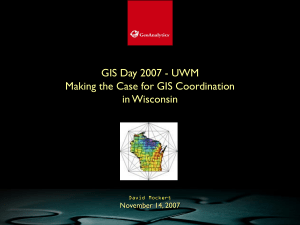Geographic Information Systems
advertisement
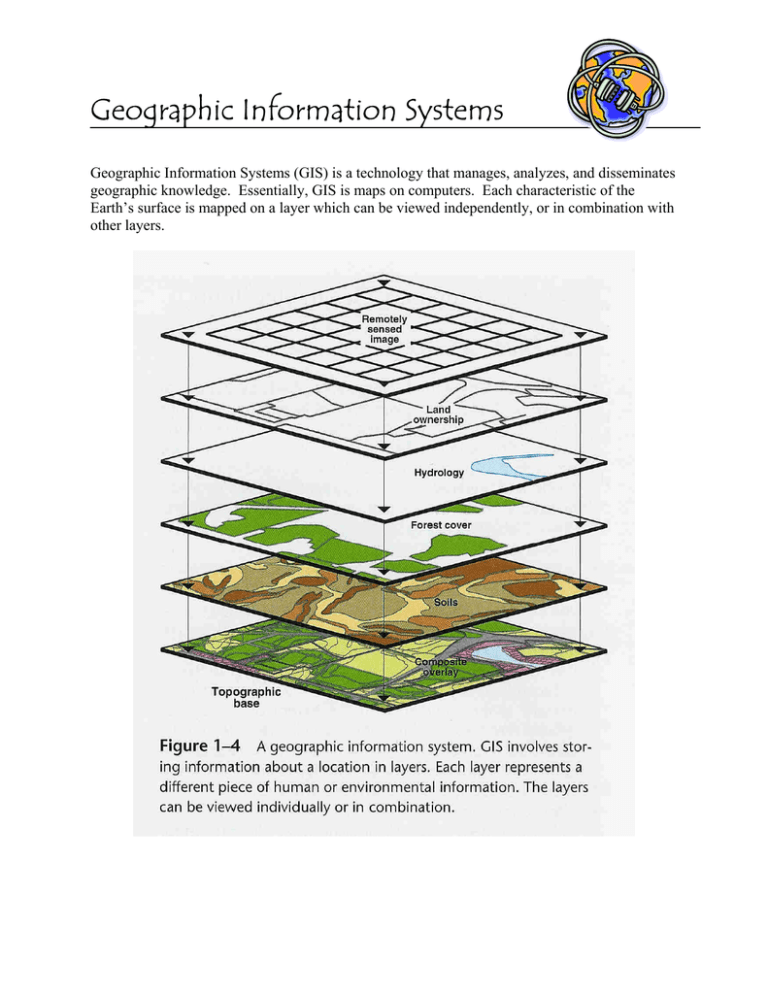
Geographic Information Systems Geographic Information Systems (GIS) is a technology that manages, analyzes, and disseminates geographic knowledge. Essentially, GIS is maps on computers. Each characteristic of the Earth’s surface is mapped on a layer which can be viewed independently, or in combination with other layers. There are three ways of viewing a GIS: a database, map, and model. 1. The Database View: A GIS is a unique kind of database of the world—a geographic database (geodatabase). It is an "Information System for Geography." Fundamentally, a GIS is based on a structured database that describes the world in geographic terms. 2. The Map View: A GIS is a set of intelligent maps and other views that show features and feature relationships on the earth's surface. Maps of the underlying geographic information can be constructed and used as "windows into the database" to support queries, analysis, and editing of the information. This is called geovisualization. 3. The Model View: A GIS is a set of information transformation tools that derive new geographic datasets from existing datasets. These geoprocessing functions take information from existing datasets, apply analytic functions, and write results into new derived datasets.
